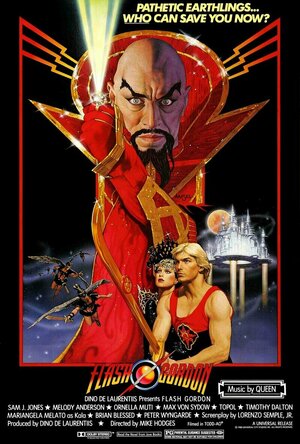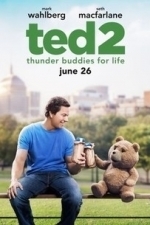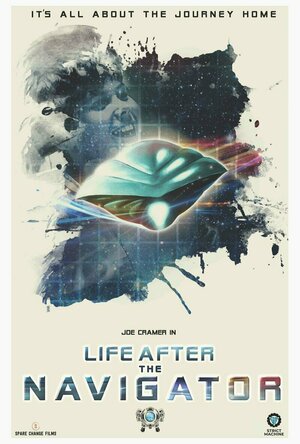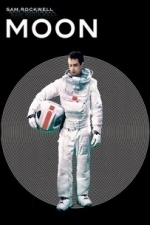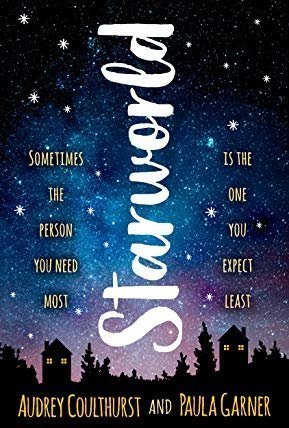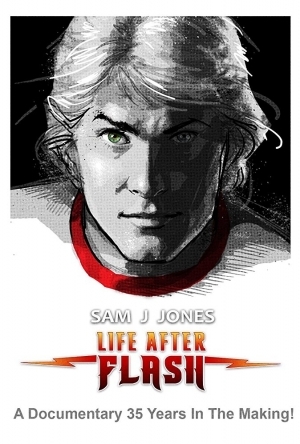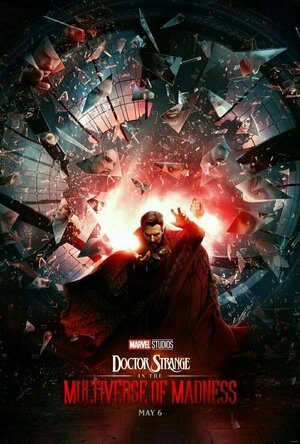Search
Search results
Ted recommended Flash Gordon (1980) in Movies (curated)
Kevin Phillipson (10072 KP) rated Flash Gordon (1980) in Movies
Apr 20, 2018
Queen soundtrack (1 more)
Brain blessed
Gordons alive
Part of my childhood saw this when i was ten years old i remember it mostly for the queen soundtrack and the over the top acting from brain blessed sam jones is good as flash gordon shame his career didnt take off after this but the movie still holds up as mindless fun
Blazing Minds (92 KP) rated Flash Gordon (1980) in Movies
Nov 1, 2021 (Updated Nov 3, 2021)
Back in 1980 I sadly didn’t get the chance to see the adventures of Flash Gordon on the big screen, but over the years I watched it so many times in the various formats from VHS to DVD, so now that Cinemas are back open in Wales and it’s the 40th Anniversary of the movie I really didn’t want to miss the chance to see Sam Jones and Brian Blessed on the big screen in the cult 80s movie.
Directed by Mike Hodges and starring Sam J. Jones, Brian Blessed, Melody Anderson, Max von Sydow and many more great names of the time, Flash Gordon went through some turbulent times in bringing the character to the big screen, but over the years the film has built a cult following and fans love the film.
Flash Gordon may have its flaws, such as some of the dodgy special effects such as seeing the background through semi-translucent characters but this all adds to the charm of the film, it does for me and although you can certainly see these issues much more on the big screen it doesn’t distract you from the fun and craziness of the film.
Directed by Mike Hodges and starring Sam J. Jones, Brian Blessed, Melody Anderson, Max von Sydow and many more great names of the time, Flash Gordon went through some turbulent times in bringing the character to the big screen, but over the years the film has built a cult following and fans love the film.
Flash Gordon may have its flaws, such as some of the dodgy special effects such as seeing the background through semi-translucent characters but this all adds to the charm of the film, it does for me and although you can certainly see these issues much more on the big screen it doesn’t distract you from the fun and craziness of the film.
Peter G. (247 KP) rated Ted 2 (2015) in Movies
Sep 4, 2019
The first film was hilarious and a fresh take on friendship that delivered big on laughs aimed squarely at adults.
Ted 2 is more of the same and is very satisfying although its lost some of its original appeal and charm.
The inclusion of Flash Gordons Sam jones is inspired and surprising which lends a comedy element to what is essentially a more prosaic plot centring around adoption.
It's still a very funny movie, but one that has reached an end, I for one have room for another Ted movie, but it's likely his last outing.
Ted 2 is more of the same and is very satisfying although its lost some of its original appeal and charm.
The inclusion of Flash Gordons Sam jones is inspired and surprising which lends a comedy element to what is essentially a more prosaic plot centring around adoption.
It's still a very funny movie, but one that has reached an end, I for one have room for another Ted movie, but it's likely his last outing.
Blazing Minds (92 KP) rated Life After The Navigator (2020) in Movies
Oct 29, 2021 (Updated Nov 3, 2021)
It’s a movie from the 80s that is loved by many and has gained such a huge following since its release back in 1986, now in Life After The Navigator from renowned writer/director Lisa Downs we are taken beyond the Flight of the Navigator and find out more about the rollercoaster life that its star Joey Cramer took after the films immense popularity.
The new documentary is the second in the series of “Life After” documentaries with the first being the brilliant Life After Flash which brought us the journey that star of Flash Gordon, Sam J. Jones, went on after his success in a movie that has become a cult classic.
The new documentary is the second in the series of “Life After” documentaries with the first being the brilliant Life After Flash which brought us the journey that star of Flash Gordon, Sam J. Jones, went on after his success in a movie that has become a cult classic.
JT (287 KP) rated Moon (2009) in Movies
Mar 10, 2020
The first few shots of Moon feel like any normal run of the mill sci-fi. There’s shots of the space station with the earth off in the distance, shots of computers and consoles and of course shots of a lone astronaut.
Shot in just 33 days Moon is one of the more eye opening sci-fi films for 2009. It has a Space Odyssey feel about it as the camera pans its way through white crisp interiors and what are seemingly chunky and dated equipment.
Even though this is set in 2024 you’d be forgiven it might have been set years earlier.
Astronaut Sam Bell has a quintessentially personal encounter toward the end of his three-year stint on the Moon, where he, working alongside his computer, GERTY, sends back to Earth parcels of a resource that has helped diminish our planet’s power problems.
What starts out as seemingly inauspicious hallucinations, after Sam is involved in a crash in his rover turn into something much more. As we don’t ask ourselves what might be wrong with Sam but who the hell he is?
The script is tight and seeing as Sam is really the only major star alongside talking computer GERTY (voiced by Kevin Spacey) director Duncan Jones does well to build dramatic, emotional and thought provoking moments.
If a 33 day shoot seems small then it has a budget too match as it only cost around $5 million to make, and when you see the shots of the space rover trundling over the Moon’s rough surface you can see exactly what that money might have been used for.
It might not have been up there with many of the biggest blockbusters in 2009 but one thing is for sure, Moon is an enjoyable trip into the unknown.
Shot in just 33 days Moon is one of the more eye opening sci-fi films for 2009. It has a Space Odyssey feel about it as the camera pans its way through white crisp interiors and what are seemingly chunky and dated equipment.
Even though this is set in 2024 you’d be forgiven it might have been set years earlier.
Astronaut Sam Bell has a quintessentially personal encounter toward the end of his three-year stint on the Moon, where he, working alongside his computer, GERTY, sends back to Earth parcels of a resource that has helped diminish our planet’s power problems.
What starts out as seemingly inauspicious hallucinations, after Sam is involved in a crash in his rover turn into something much more. As we don’t ask ourselves what might be wrong with Sam but who the hell he is?
The script is tight and seeing as Sam is really the only major star alongside talking computer GERTY (voiced by Kevin Spacey) director Duncan Jones does well to build dramatic, emotional and thought provoking moments.
If a 33 day shoot seems small then it has a budget too match as it only cost around $5 million to make, and when you see the shots of the space rover trundling over the Moon’s rough surface you can see exactly what that money might have been used for.
It might not have been up there with many of the biggest blockbusters in 2009 but one thing is for sure, Moon is an enjoyable trip into the unknown.
Despite running in very different circles in school, Sam Jones and Zoe Miller have more in common than they think: they both want to escape the difficulty that is their home lives. Sam is a quiet loner, content to spend Sundays with her best friend, Will. She loves the stars, but isn't sure she'll ever be able to study them, thanks to her mom, whose life is ruled by obsessive compulsive disorder. Ever since her Dad moved overseas, the burden of caring for her Mom falls squarely on Sam. Meanwhile, at school, Zoe seems carefree and popular. But her charisma hides her secrets: she struggles with the fact that she's adopted. She also has a mom in remission from cancer and a disabled younger brother who is the main focus of her parents. When the girls have a chance meeting at school, they exchange phone numbers, and suddenly find themselves bonding over text messages and a land they've created together: Starworld. Starworld gives Zoe and Sam the escape from reality they both so desperately need. But can it survive all the outside influences and stress each are facing?
"If I have a superpower, it's invisibility. Like the perpetually overcast skies of Portland in winter, I'm part of the background -- a robot with a disappearance drive, the dullness against which everyone else shines."
~Sam
This was an interesting and somewhat different YA novel. I enjoyed the story of two brave girls battling tough circumstances. Boy, poor Zoe and Sam certainly had the weight of the world on their shoulders. I really liked both of our main characters. The book tells the story from each of their perspectives, making it easy to know each girl. I found myself a bit more aligned to Sam--probably because she was queer and shy (like drawn to like, right?). As other reviews have mentioned, some of the book is in texting format, as Sam and Zoe fall into Starworld. Being far removed from teenagehood myself (sigh), I will admit that I did sometimes sort of "fast read" or skim those sections. I appreciated them--because Starworld meant so much to these girls and their friendship--but the text-speak wasn't always the easiest to read and digest.
I had picked this up thinking it was a love story, but it's not a true romance, though there's love in other forms. There's some great representation in this book: a queer character in Sam, plus discussion of adoption, mental illness (OCD and anxiety), disabilities, and more. All were very well treated too, I felt.
The book felt a little slow at times. It felt a little repetitive in its insistence on Zoe feeling different due to being adopted. Still, I was very drawn to Sam and Zoe's story. There was a strength in each of them, and I was intrigued to see what was going to happen. Sam's arc as she struggled with her romantic feelings was especially strong and wonderfully done.
Even though much of the book is serious, it's also very funny at times, with some excellent quotes and zingers. (I really did love Sam and her sense of humor; she was right up my alley.)
"I hate using phones for their original intended purpose. It's like Alexander Graham Bell wondered, Hey, what could maximize the awkwardeness of human-to-human communication? And then answered himself by giving us the ability to speak to one another through stupid disembodied little boxes."
I mean, right? One of the best quotes ever.
So, overall, this book is really a love story of friendship and triumph. It's very easy to root for the characters and get caught up in their lives. I was often just aghast at how much these poor girls had to go through. If you're not necessarily used to text-speak, it may give you a pause, but Starworld is a big part of the book (obviously!) and it's woven well into the story. This was a different and intriguing read, and I'm glad I picked it up. 3.5+ stars (rounded up to 4 here).
"If I have a superpower, it's invisibility. Like the perpetually overcast skies of Portland in winter, I'm part of the background -- a robot with a disappearance drive, the dullness against which everyone else shines."
~Sam
This was an interesting and somewhat different YA novel. I enjoyed the story of two brave girls battling tough circumstances. Boy, poor Zoe and Sam certainly had the weight of the world on their shoulders. I really liked both of our main characters. The book tells the story from each of their perspectives, making it easy to know each girl. I found myself a bit more aligned to Sam--probably because she was queer and shy (like drawn to like, right?). As other reviews have mentioned, some of the book is in texting format, as Sam and Zoe fall into Starworld. Being far removed from teenagehood myself (sigh), I will admit that I did sometimes sort of "fast read" or skim those sections. I appreciated them--because Starworld meant so much to these girls and their friendship--but the text-speak wasn't always the easiest to read and digest.
I had picked this up thinking it was a love story, but it's not a true romance, though there's love in other forms. There's some great representation in this book: a queer character in Sam, plus discussion of adoption, mental illness (OCD and anxiety), disabilities, and more. All were very well treated too, I felt.
The book felt a little slow at times. It felt a little repetitive in its insistence on Zoe feeling different due to being adopted. Still, I was very drawn to Sam and Zoe's story. There was a strength in each of them, and I was intrigued to see what was going to happen. Sam's arc as she struggled with her romantic feelings was especially strong and wonderfully done.
Even though much of the book is serious, it's also very funny at times, with some excellent quotes and zingers. (I really did love Sam and her sense of humor; she was right up my alley.)
"I hate using phones for their original intended purpose. It's like Alexander Graham Bell wondered, Hey, what could maximize the awkwardeness of human-to-human communication? And then answered himself by giving us the ability to speak to one another through stupid disembodied little boxes."
I mean, right? One of the best quotes ever.
So, overall, this book is really a love story of friendship and triumph. It's very easy to root for the characters and get caught up in their lives. I was often just aghast at how much these poor girls had to go through. If you're not necessarily used to text-speak, it may give you a pause, but Starworld is a big part of the book (obviously!) and it's woven well into the story. This was a different and intriguing read, and I'm glad I picked it up. 3.5+ stars (rounded up to 4 here).
Andy K (10823 KP) rated Life After Flash (2017) in Movies
Jul 5, 2019
Flash! Ah Ah!
To say the film Flash Gordon shaped me as a child would be a gross understatement. I worship the film as a screen classic and as one of my favorite films of all time. Ok, I know it's not Citizen Kane; however, it is the Citizen Kane of campy 80s rock operas.
As much as I would love to have an 8 hour conversation with someone about the merits of Flash Gordon, I should be talking about the 2017 film Life After Flash which I don't think I had any choice but to enjoy.
The film itself is kind of divided into to parts. The first half talking to all the surviving principles about how they were cast, the production itself, their interactions with epic producer Dino De Laurentiis and the film's legacy in their eyes. The second half was devoted to star Sam J. Jones himself and his personal journey before, during and after the film was completed and released in 1980.
He talked about how his ego got in the way of production so much so that his voice isn't even used in the film and was dubbed by another actor. He also expounded on his life since talking about dark times when the work dried up and how he even thought of suicide.
Thankfully after many years, Seth MacFarlane and asked him to cameo his most famous role in "Ted" and how that has reignited his film and public appearance career. (As a side note, since I am just a huge Flash Gordon fan, the Sam Jones scenes in Ted are about the funniest scenes ever in a motion picture for me).
Others mention the effects of typecasting in Hollywood. Even director Richard Donner mentions the fate Christopher Reeve has after Superman.
I should watch more documentaries as I always learn things I didn't know before and this great film was no exception.
As much as I would love to have an 8 hour conversation with someone about the merits of Flash Gordon, I should be talking about the 2017 film Life After Flash which I don't think I had any choice but to enjoy.
The film itself is kind of divided into to parts. The first half talking to all the surviving principles about how they were cast, the production itself, their interactions with epic producer Dino De Laurentiis and the film's legacy in their eyes. The second half was devoted to star Sam J. Jones himself and his personal journey before, during and after the film was completed and released in 1980.
He talked about how his ego got in the way of production so much so that his voice isn't even used in the film and was dubbed by another actor. He also expounded on his life since talking about dark times when the work dried up and how he even thought of suicide.
Thankfully after many years, Seth MacFarlane and asked him to cameo his most famous role in "Ted" and how that has reignited his film and public appearance career. (As a side note, since I am just a huge Flash Gordon fan, the Sam Jones scenes in Ted are about the funniest scenes ever in a motion picture for me).
Others mention the effects of typecasting in Hollywood. Even director Richard Donner mentions the fate Christopher Reeve has after Superman.
I should watch more documentaries as I always learn things I didn't know before and this great film was no exception.
LeftSideCut (3776 KP) rated Three Billboards Outside Ebbing, Missouri (2017) in Movies
Jun 6, 2021
Three Billboards is a fricking masterpiece, and another home run from Martin McDonagh.
The cast is stacked to say the least. Frances McDormand and Sam Rockwell both give a career best performance. The supporting cast is made up of the likes of Woody Harrelson, Caleb Landry Jones, Abbie Cornish, Lucas Hedges, John Hawkes, Clarke Peters, Samara Weaving, and Peter Dinklage - all who are just great. McDonagh's screenplay is fantastic as per usual, and the runtime is filled with his token dark humour, as well as plenty of emotionally charged events. The narrative is sort of all over the place, with several plot strands all running alongside and throughout eachother, but it's messiness adds to the whole experience, almost like a sort of controlled chaos. All of this is backed by a truly wonderful music score by Carter Burwell.
Three Billboards is just one of those movies that springs off the screen and sticks in your head for all the right reasons.
The cast is stacked to say the least. Frances McDormand and Sam Rockwell both give a career best performance. The supporting cast is made up of the likes of Woody Harrelson, Caleb Landry Jones, Abbie Cornish, Lucas Hedges, John Hawkes, Clarke Peters, Samara Weaving, and Peter Dinklage - all who are just great. McDonagh's screenplay is fantastic as per usual, and the runtime is filled with his token dark humour, as well as plenty of emotionally charged events. The narrative is sort of all over the place, with several plot strands all running alongside and throughout eachother, but it's messiness adds to the whole experience, almost like a sort of controlled chaos. All of this is backed by a truly wonderful music score by Carter Burwell.
Three Billboards is just one of those movies that springs off the screen and sticks in your head for all the right reasons.
Chris Sawin (602 KP) rated Doctor Strange in the Multiverse of Madness (2022) in Movies
May 4, 2022
The noticeable Sam Raimi elements. (2 more)
The film is great when it's able to showcase horror.
The second end credits sequence is amazing.
The film is incredibly formulaic outside of its horror elements. (2 more)
You don't really care about any of the new characters.
No one is going to get that first end credits sequence.
Sam Raimi Finally Brings Horror to the MCU
Even with all of the universe jumping and Sam Raimi being able to add his filmmaking trademarks, Doctor Strange in the Multiverse of Madness is a bit too formulaic for its own good. Doctor Strange (Benedict Cumberbatch) has been having dreams of a different version of himself dying while seeking a mythical book known as The Book of Ashanti. In his dream, Strange encounters America Chavez (Xochitl Gomez), a young girl with the uncontrollable power of universe jumping.
But then Strange meets America in his universe and learns that dreams are actually us seeing different versions of ourselves in different universes. Still blinded by the events in WandaVision, Scarlet Witch (Elizabeth Olsen) intends to capture America and utilize her universe jumping ability to reunite with the children she created with magic.
Doctor Strange in the Multiverse of Madness relies on what feels like a simplistic storyline to drive what is essentially the MCU’s first horror film. Strange really only seems driven to protect America because he dreamed about her and Wanda Maximoff has only turned evil because there’s suddenly this very thin line between being a mother and becoming a monster. Most of the film feels like a typical MCU film featuring the standard humor and wisecracking you’ve come to expect from superhero films along with the fate of the world (and possibly every other) probably being at stake.
The most refreshing moments of Doctor Strange in the Multiverse of Madness are the moments that you can tell Raimi had a hand in writing, directing, or having some sort of input in some capacity. This is Raimi’s first directorial gig since 2013’s Oz: The Great and Powerful and it becomes quite obvious that audiences have missed his work. The Shuma Gorath sequence (renamed Gargantos for trademark purposes) is outstanding. Doctor Strange, Wong, and America battling a giant one eyed octopus is something so awesome that it kind of writes itself. Not only is it the film’s first big action sequence, but you can see a lot of Doctor Octopus and Spider-Man 2 influences as Gargantos destroys skyscrapers and gets his tentacles chopped off. The slicing of the bus as it’s thrown at Doctor Strange and America is also legitimately one of the coolest moments of the film.
There is a ton of homage to Evil Dead and Drag Me to Hell buried within the film. The final 20 minutes are overflowing with concepts seemingly pulled from classic Sam Raimi films. Doctor Strange in the Multiverse of Madness revolves around a book of the damned not unlike the Necronomicon. There are at least two major eyeball gags and a ridiculous amount of burning candles in the film. Like most Sam Raimi films, there’s an emphasis on corniness. His sense of humor has always been on the corny side and the heartfelt moments always seem to be milked and over exaggerated ever so slightly. All of these elements are in Doctor Strange in the Multiverse of Madness and they are the moments that make the film feel more unique in comparison to the other 28 films in the MCU.
Strange saves America from Scarlet Witch by knocking her and himself into her own star shaped portal that sees them both falling through multiple universes. It’s a gloriously disorienting sequence, but it’s also incredibly similar to not only what we saw in the first Doctor Strange film but also a lot like the 700 space jumps in Guardians of the Galaxy Vol. 2. This film is meant to open the door even further when it comes to the cosmic side of the MCU and now the horror side of it as well. Doctor Strange in the Multiverse of Madness is not Spider-Man: No Way Home. There are not a ton of nostalgic cameos sprinkled throughout the film. There’s one sequence that combines fan speculation and other universes, but there aren’t a lot of hidden cameos like the internet speculated.
What is perhaps most interesting about this superhero sequel is that Stephen Strange is still learning to be more humble. His only play during Infinity War that ended up costing so many their lives for five long years is still weighing heavily on his mind. He also still loves Christine (Rachel McAdams) despite the fact that she’s moved on and struggles with whether he’s now happy or not. Throughout the film he’s constantly compared to the Doctor Strange of that universe and yet the film goes out of its way to show that this Doctor Strange is different. He will break the rules if he has to, but he will only do so when it’s the only option.
With so many universes and alternate versions of himself, it was naturally only a matter of time before Doctor Strange would have to fight himself. The musical note war Strange has with the Darkhold obsessed version of himself in the collapsed universe in the second half of the film does some really intriguing stuff with musical notes that essentially borrows visuals from the Chuck Jones directed animated short, “High Note,” from 1960 as well as the battle or reactionary element found in video games such as Dance Dance Revolution and Guitar Hero. It’s an unusual fight that seems to be inspired solely by Strange bumping into a piano during the magical brawl.
Doctor Strange in the Multiverse of Madness is dark, silly, and fan pleasing. The film is at is most bewitching when Sam Raimi can let his horror roots be showcased. It will satisfy horror and superhero film fans alike, but would have and could have been even better if Raimi was allowed to dive even further into the horror genre. Be sure to stay after the credits, as well. There are two after credits sequences with the final one being so absurdly on the nose for Sam Raimi that it may be the most entertaining part of the film.
But then Strange meets America in his universe and learns that dreams are actually us seeing different versions of ourselves in different universes. Still blinded by the events in WandaVision, Scarlet Witch (Elizabeth Olsen) intends to capture America and utilize her universe jumping ability to reunite with the children she created with magic.
Doctor Strange in the Multiverse of Madness relies on what feels like a simplistic storyline to drive what is essentially the MCU’s first horror film. Strange really only seems driven to protect America because he dreamed about her and Wanda Maximoff has only turned evil because there’s suddenly this very thin line between being a mother and becoming a monster. Most of the film feels like a typical MCU film featuring the standard humor and wisecracking you’ve come to expect from superhero films along with the fate of the world (and possibly every other) probably being at stake.
The most refreshing moments of Doctor Strange in the Multiverse of Madness are the moments that you can tell Raimi had a hand in writing, directing, or having some sort of input in some capacity. This is Raimi’s first directorial gig since 2013’s Oz: The Great and Powerful and it becomes quite obvious that audiences have missed his work. The Shuma Gorath sequence (renamed Gargantos for trademark purposes) is outstanding. Doctor Strange, Wong, and America battling a giant one eyed octopus is something so awesome that it kind of writes itself. Not only is it the film’s first big action sequence, but you can see a lot of Doctor Octopus and Spider-Man 2 influences as Gargantos destroys skyscrapers and gets his tentacles chopped off. The slicing of the bus as it’s thrown at Doctor Strange and America is also legitimately one of the coolest moments of the film.
There is a ton of homage to Evil Dead and Drag Me to Hell buried within the film. The final 20 minutes are overflowing with concepts seemingly pulled from classic Sam Raimi films. Doctor Strange in the Multiverse of Madness revolves around a book of the damned not unlike the Necronomicon. There are at least two major eyeball gags and a ridiculous amount of burning candles in the film. Like most Sam Raimi films, there’s an emphasis on corniness. His sense of humor has always been on the corny side and the heartfelt moments always seem to be milked and over exaggerated ever so slightly. All of these elements are in Doctor Strange in the Multiverse of Madness and they are the moments that make the film feel more unique in comparison to the other 28 films in the MCU.
Strange saves America from Scarlet Witch by knocking her and himself into her own star shaped portal that sees them both falling through multiple universes. It’s a gloriously disorienting sequence, but it’s also incredibly similar to not only what we saw in the first Doctor Strange film but also a lot like the 700 space jumps in Guardians of the Galaxy Vol. 2. This film is meant to open the door even further when it comes to the cosmic side of the MCU and now the horror side of it as well. Doctor Strange in the Multiverse of Madness is not Spider-Man: No Way Home. There are not a ton of nostalgic cameos sprinkled throughout the film. There’s one sequence that combines fan speculation and other universes, but there aren’t a lot of hidden cameos like the internet speculated.
What is perhaps most interesting about this superhero sequel is that Stephen Strange is still learning to be more humble. His only play during Infinity War that ended up costing so many their lives for five long years is still weighing heavily on his mind. He also still loves Christine (Rachel McAdams) despite the fact that she’s moved on and struggles with whether he’s now happy or not. Throughout the film he’s constantly compared to the Doctor Strange of that universe and yet the film goes out of its way to show that this Doctor Strange is different. He will break the rules if he has to, but he will only do so when it’s the only option.
With so many universes and alternate versions of himself, it was naturally only a matter of time before Doctor Strange would have to fight himself. The musical note war Strange has with the Darkhold obsessed version of himself in the collapsed universe in the second half of the film does some really intriguing stuff with musical notes that essentially borrows visuals from the Chuck Jones directed animated short, “High Note,” from 1960 as well as the battle or reactionary element found in video games such as Dance Dance Revolution and Guitar Hero. It’s an unusual fight that seems to be inspired solely by Strange bumping into a piano during the magical brawl.
Doctor Strange in the Multiverse of Madness is dark, silly, and fan pleasing. The film is at is most bewitching when Sam Raimi can let his horror roots be showcased. It will satisfy horror and superhero film fans alike, but would have and could have been even better if Raimi was allowed to dive even further into the horror genre. Be sure to stay after the credits, as well. There are two after credits sequences with the final one being so absurdly on the nose for Sam Raimi that it may be the most entertaining part of the film.
